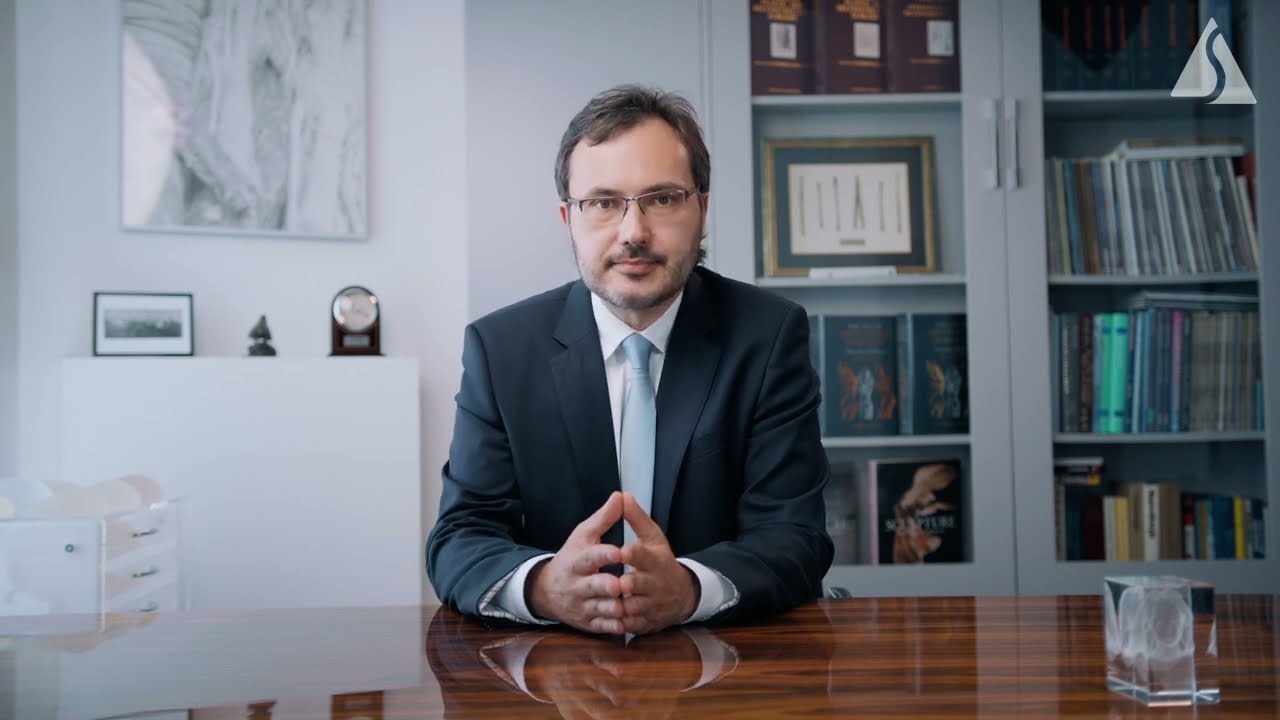Compendium of knowledge on abdominal plasty

Abdominal plasty is a procedure that raises many questions, especially among those considering improving the appearance of this body part. Doubts most often concern the procedure itself, the recovery process and the results that can be obtained. It's a good idea to learn all the relevant information before deciding to have the surgery. We have created this guide to dispel doubts in an accessible way and provide answers to questions that are not always easy to ask.
What is abdominal plasty?
Abdominal plasty is a surgical procedure to improve the contour of the abdomen. The procedure involves removing excess skin and fat, as well as tightening the abdominal muscles for a more aesthetically pleasing appearance. Many people opt for the surgery after significant weight loss, pregnancy or as a result of the natural aging process.
It is worth noting that abdominoplasty is not a method of weight loss, but a way to improve the figure in people who have already reached their target weight.
Who should consider abdominal plastic surgery?
Abdominoplasty is particularly recommended:
- People who have undergone significant weight loss, resulting in sagging skin,
- women after pregnancy, which affected the elasticity and appearance of the abdominal skin,
- Those struggling with the problem of diastasis recti, or separation of the rectus abdominis muscles,
- People who want to improve the overall contour of the body and increase self-confidence.
Contraindications to abdominal plasty
Abdominal plastic surgery, although effective in improving the appearance of the figure, is not suitable for everyone. There are contraindications that prevent the procedure or increase the risk of complications. Among the most important are obesity, which not only affects the effects of surgery, but also significantly increases the risk of health complications. Equally important are uncontrolled medical conditions, such as diabetes or heart disease, which can impede healing and cause serious health risks.
Smoking is another exclusion factor, as it negatively affects the tissue regeneration process and increases the risk of infection. For women planning the procedure, recent pregnancy is also an important contraindication - specialists recommend waiting at least a year after childbirth for the body to fully recover. It is always necessary to have a medical consultation to assess the risks and determine whether the patient is a suitable candidate for abdominal plasty before making a decision.
Preparation for abdominoplasty procedure
Preparation for abdominal plasty is an important stage that affects both the safety and the final results of the procedure. The patient should undergo a set of diagnostic tests so that the doctor can assess his overall health and rule out any contraindications. It is important to give up smoking cigarettes for at least a month before the operation, as nicotine negatively affects the wound healing process and increases the risk of complications.
Arranging transportation to and from the clinic on the day of surgery is another aspect that should be planned in advance, as the patient will not be able to drive himself. It is also advisable to prepare the home for the recovery period - providing comfortable conditions, such as a properly positioned bed, easy access to necessary items or help from loved ones, will significantly facilitate recovery. Adequate physical and mental preparation is essential to ensure that the procedure goes smoothly and the recovery is as unburdening as possible.
Course of abdominoplasty surgery
Abdominal plasty surgery usually takes place under general anesthesia and lasts from 2 to 4 hours, depending on the extent. In the case of a full abdominal plasty, the operation may take longer than in the case of a so-called miniplasty, which is less invasive.
How does the abdominal plasty proceed?
- The surgeon makes an incision along the lower abdomen, usually within the underwear line, to reduce the visibility of scars.
- Excess tissue is removed and the skin is stretched to create a smooth contour.
- In the case of diastasis recti, the muscles are sutured, which restores their tension.
- If necessary, the surgeon moves the navel to fit the new shape of the abdomen.
- The incisions are sutured, and finally bandages are applied.
Recovery after abdominal plastic surgery
Immediately after the procedure, patients may feel discomfort, notice swelling and bruising, but these gradually subside. Perceived pain can be controlled with painkillers prescribed by the doctor.
During recovery from abdominal plasty, it is important to avoid intense physical activity for at least a few weeks to avoid exposing the body to unnecessary exertion and to promote the healing process. It is important to wear compression garments to help reduce swelling, stabilize the surgical area and promote proper body contouring. Regular follow-up visits to the surgeon are necessary to monitor the progress of healing, remove sutures and make sure that recovery is proceeding without complications. Proper care and adherence to the doctor's recommendations are the basis for a quick return to full function.
Effects of abdominal plasty
Abdominal plastic surgery is a procedure that significantly affects the appearance of the figure and how it feels. The results primarily include a smoother abdominal contour due to the removal of excess skin and fatty tissue, resulting in a more aesthetically pleasing appearance. Tightening of the abdominal muscles improves body proportions, giving the figure a more harmonious shape. Many people also notice an increase in self-confidence and satisfaction with their bodies after the procedure, which has a positive impact on quality of life.
The effects of abdominal plasty are permanent, especially if the patient leads a healthy lifestyle, maintains a stable weight and keeps fit. It is worth remembering that future weight changes or pregnancy can affect the final results, so it is recommended to consider surgery at the right time in life to enjoy the results for many years.
Risks associated with abdominal plastic surgery
Abdominal plasty, like any surgical procedure, involves certain risks and the possibility of complications. The most commonly cited risks include infection, which can occur at the incision site, and bleeding - although rare, may require intervention, including blood transfusions. Moreover, as with any procedure, scarring must be expected, which, while usually healing well, may be visible depending on the patient's individual predisposition.
To reduce the risk of complications, it is important to choose a clinic where the procedure will be carried out by experienced specialists using the latest methods. At our clinic, we place equal importance on post-operative support for each of our patients. An informed approach and cooperation with the doctor are essential to achieve the best results from the procedure.
What are the alternatives to abdominoplasty?
For those who are not ready for a surgical solution, there are several alternative methods to improve the appearance of the abdomen.
- One of the most popular options is liposuction, which effectively removes excess fat, but does not solve the problem of excess skin or weakened abdominal muscles.
- For those looking for less invasive methods, there are also cryolipolysis (fat freezing) treatments or ultrasound therapy, which help with body contouring by reducing fat without surgery.
These alternatives are suitable for people with minor problems in the abdominal area that do not require major changes in body contour. However, it is worth remembering that the results of such procedures may be less satisfactory than those of abdominoplasty and often require a series of procedures and a significant commitment to maintaining a healthy lifestyle. The selection of an appropriate method should be preceded by a consultation with a specialist who will assess the patient's individual needs.
FAQ
Can I combine abdominal plastic surgery with other procedures?
Yes, many people choose to combine abdominal plasty with other procedures, such as liposuction or body lift, to achieve a comprehensive body rejuvenation effect.
What are the most important stages of rehabilitation after abdominal plasty?
- Early phase (1-2 weeks after surgery). During this period, swelling and bruising are normal. Patients should expect pain and discomfort, which can be relieved with prescribed pain medications. Intense physical exertion and lifting heavy objects should be avoided. Patients should move in a slightly stooped position to reduce pain.
- Middle phase (3-6 weeks after surgery). Swelling begins to subside and the scar hardens. The pain should be less intense, allowing a gradual return to normal activities. You can begin light exercise and daily activities, such as walking. However, it is recommended to avoid strenuous workouts and weight lifting.
- Late phase (from 2 months to a year after surgery). The full effects of abdominal plasty are visible after a few months. The scar becomes less visible and soft. It is worthwhile to continue working with a physiotherapist, who will help restore full function of the abdominal muscles and reduce the risk of scarring.
What are the most common mistakes people make before abdominal plastic surgery?
- Confusing abdominal plastic surgery with weight loss. Abdominal plasty is not a weight loss procedure. Often patients come in hoping to lose weight, which is the wrong approach. The procedure is designed to remove excess skin and fat after major weight loss or pregnancy, not to reduce weight.
- Unrealistic goals. Patients often have unrealistic expectations about the results of surgery. It is important to understand that abdominal plasty improves the appearance of this area of the body, but does not eliminate all aesthetic problems like stretch marks or skin flaccidity.
- Neglecting the recovery period. After surgery, patients must avoid exercise for several weeks. Ignoring this recommendation can lead to complications and prolonged healing time.
- Lack of mental preparation. Many people are unaware of the psychological effects of surgery. It is a good idea to consult with a therapist or psychologist before surgery to discuss concerns and expectations about the operation and its results.














